The establishment of a Church at Shottsburn is directly linked to the passing by Parliament of the Patronage Act of 1712. This Act stated that the choosing of a minister for each Church would now no longer be carried out by the congregation but would instead be done by the Patron of the Church. The Patron of the Kirk O’ Shotts at this time was the Duke of Hamilton. In the years following the passing of the Patronage Act the choice of two ministers in particular for Kirk O’ Shotts caused much resentment and protest. The first of these was the Rev. David Orr in 1738. Opposition to his appointment was so strong that a number of the congregation left the Kirk and joined the Associate Presbytery. (The Associate Presbytery was an independent church founded in 1733 by Ebenezer Erskine with congregations nationwide whose members had left the National Church of Scotland due to its policy regarding the Patronage Act.) The congregation members who had left formed themselves into a Fellowship Society and Prayer Group and created an alliance with a similar group at Daviesdyke (an area east of the village of Bonkle) who had left Cambusnethan Church due to their objection of the ordination of a minister there under the terms of the Patronage Act. The Daviesdyke Group were recognised as a congregation by the Associate Presbytery in 1737 and when their Church was built and opened in 1740 it was there that the members of the congregation who had left Kirk O’ Shotts would worship for about the next thirty years. The church they would worship in was called the Moor Kirk or Moir Kirk and it had a turf roof which often caused it to be referred to as the Heather Kirk. It was rebuilt in 1780 with a slate roof but it was finally abandoned in the early 1800’s when a new Church was built in Bonkle. The ruins of this Kirk can still be seen about a mile or so south of Allanton, just off the Dura Road.
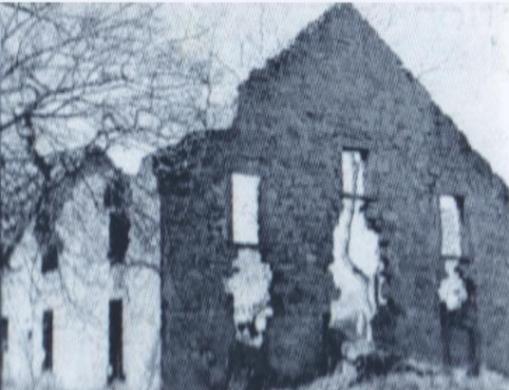
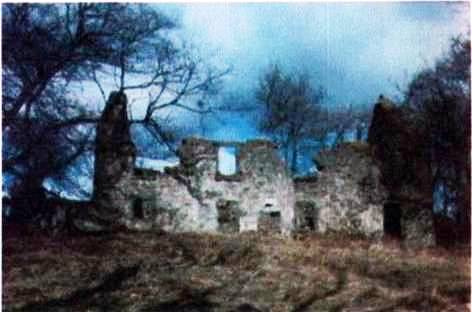
It is also known locally as Dura Kirk.
The choice of the Rev. Laurence Wells in 1762 caused even greater ill-feeling amongst the congregation to such an extent that direct action was taken by some members to prevent the installation of the Rev. Wells at Kirk O’ Shotts.
Following the selection of the Rev. Wells attempts were made on three occasions by officials of the Presbytery to have him ordained in the Kirk O’ Shotts. All three attempts were unsuccessful due to various actions taken by members of the congregation. The first attempt failed due to the fact that when members of the Presbytery and Rev. Wells arrived at the Kirk O’ Shotts, Andrew Hamilton, the Bellman, who was keeper of the keys for the Kirk and Churchyard was nowhere to be found and in inquiring of his whereabouts his wife replied that she had no idea where he was or where he kept the keys. The second occasion saw the ordination party jostled and insulted by an angry mob with the Rev. Wells assaulted and having his coat torn. On the third occasion the Sheriff of the County dispatched a troop of Dragoons from Hamilton and a company of soldiers from Glasgow to preserve the peace and to enable the officials to carry out the ordination. However, when they arrived at the Kirk O’ Shotts, no members of the Presbytery or the Rev. Wells put in an appearance. After waiting several hours the Dragoons and soldiers returned to their barracks. It transpired that the Rev. Wells and the Presbytery officials had been intercepted on their road to the Kirk and held so they could not reach their destination.
The ordination of the Rev. Wells as minister of the Kirk O’ Shotts eventually took place on the 16th August, 1768 at Presbytery House, Hamilton six years after he had first been selected. Some of those involved in the riots against the Rev. Wells were arrested and appeared in court in Glasgow on 17th September, 1768. William Inglis, James Hamilton, Elizabeth Ferguson and Sarah Russell were indicted on charges of riot and assault on the Rev. Wells. James Hamilton and Sarah Russell were found not guilty, William Inglis was found guilty and fined 200 merks and imprisoned for two months. Elizabeth Ferguson was also found guilty and sentenced to be taken through the streets of Glasgow with her hands tied behind her back followed by the hangman and to be kept at hard labour in a House of Correction for two months. The installation of the Rev. Wells and the aftermath were the last straw for a significant number of the congregation who left the Kirk O’ Shotts and after amalgamating with the group who had left in 1738 they applied to the Associate Presbytery to be classed as a congregation. This was granted and they worshipped locally, sometimes in a tent, until Shottsburn Church was built.
The Church at Shottsburn was built in 1771 on land purchased from farmer Andrew Smith of Blairmuckhill Farm. The foundation stone was taken from the bed of the Shotts Burn.
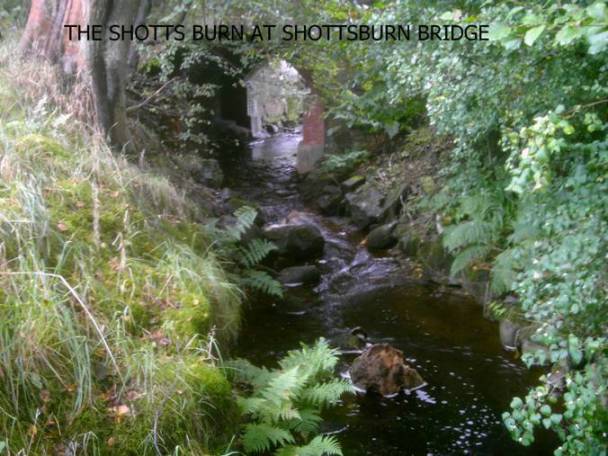
Stones used in the construction of the Church were carried there by men and women of the congregation from the hillside to the north. The area these stones were taken from eventually became the site of Duntilland Quarry. The first minister of Shottsburn Church was the Rev. John Scott. The manse was built in 1774.
From the formation of the Associate Presbytery in 1733 the Churches and the congregations who comprised it underwent many divisions and amalgamations both internal and external which resulted in various name changes over the next two hundred years. Eventually this culminated in practically all the independent churches, who had been opposed to the Patronage Act, amalgamating as the United Free Church in 1900. With the repeal of the Patronage Act in 1874 the conditions seemed appropriate for the return of these independent churches to the national Church of Scotland. However negotiations regarding amalgamation took place until1929 following which the United Free Church was fully absorbed into the Church of Scotland.
A notable event which took place annually, involving Shottsburn Church members and friends, was a conventicle normally held on the hillside across from the Church near to the Giant’s Well.
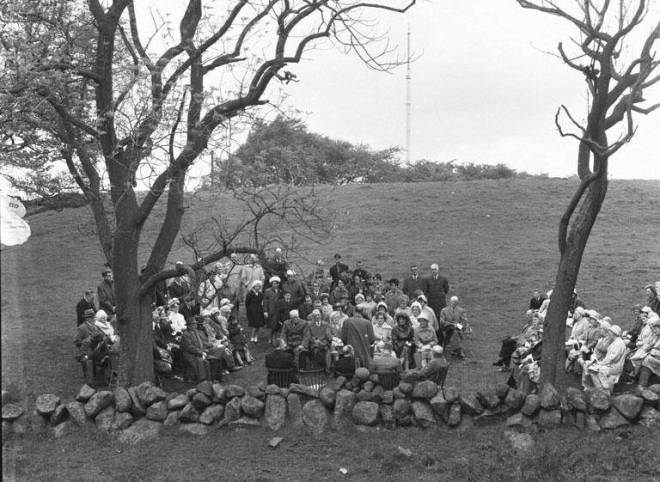
The congregation at Shottsburn continued to worship there until 1975 when a decision was taken which resulted in them returning to the Kirk O’ Shotts to worship for the first time in over two hundred years.
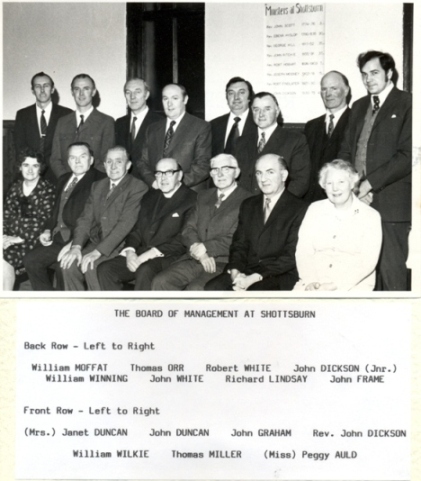
The Rev. John Dickson was the last minister to serve at Shottsburn Church. He had served from 1930 until 1975.
Following the move by the congregation back to the Kirk O’ Shotts, the Shottsburn Church, Manse and grounds were sold with the Manse then being used as a private dwelling house. Later the Manse and grounds were sold again but by this time the Church had fallen into disrepair and was demolished.
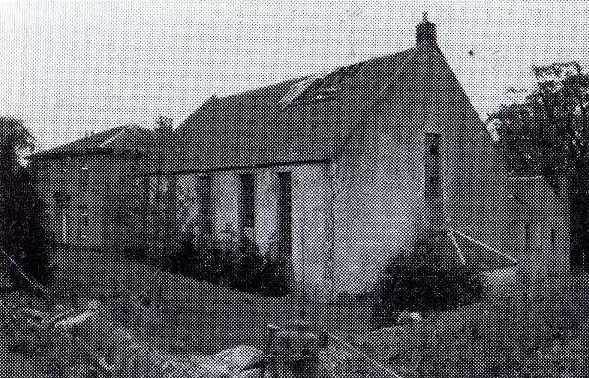
However the Manse is still in use as a family home and the Church Hall can still be seen practically intact.
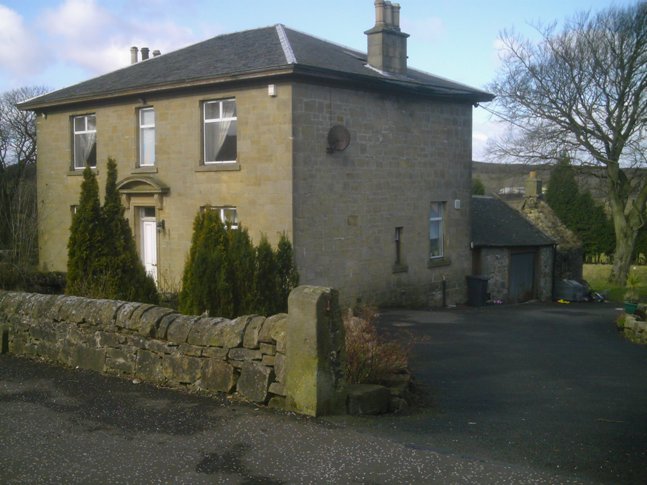
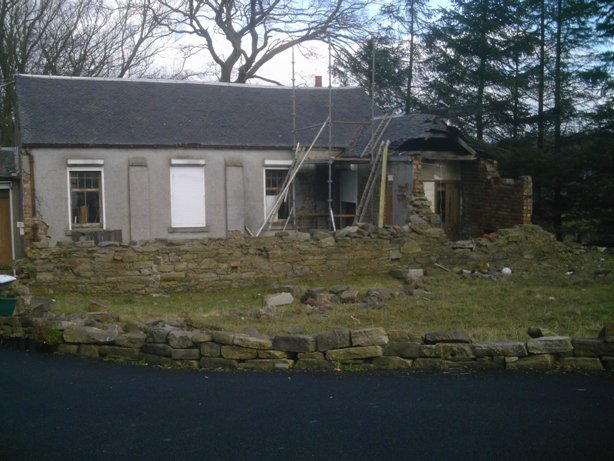
---------------00000---------------
GOSPEL HALL.
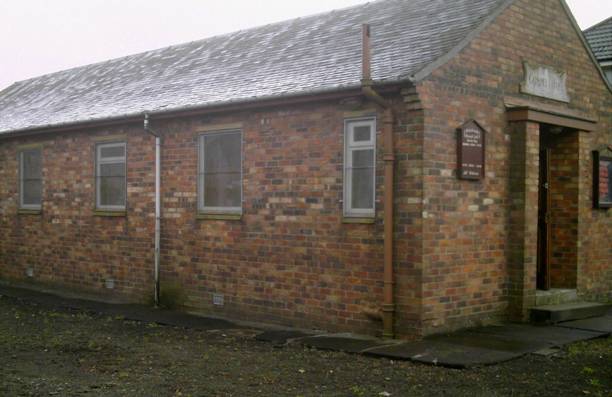
The establishment of the Gospel Hall and its congregation in Salsburgh came about as the result of visits to the Village by the Lanarkshire Christian Union in the late 1890’s and early 1900’s. These visits took the form of a service in the open air or sometimes in a large tent. The members of the Lanarkshire Christian Union who hosted them referred to these services as Witness Meetings. Eventually a number of Salsburgh villagers decided that they wished to be a part of this Christian Union and so they formed themselves into a Gospel group with the aim of constructing premises in which to worship. Amongst the founder members of this group were Robert Irvine, Jimmy Kilgower, Jimmy Fleming and John (Johnnie) King. The group referred to themselves as brethren.
The first Gospel Hall in the village of Salsburgh was a wooden construction built by the Lanarkshire Christian Union in the early part of the 20th Century on the same site as the present Hall. A prominent feature of this hall was a large wood burning stove which provided the heating. The land was leased from local farmer William Gibson. The New Stevenson Brethren made a large contribution to the setting up of the original mission with additional help being provided by them when required.
Edward Rankin, a notable Irish evangelist, lived locally during his term as a resident preacher at the Gospel Hall.
Around 1932 Lanarkshire County Council, after negotiations with David and William Gibson of Longacre and Craighead Farms and officials of David Carrick’s Drumpellier Estates, purchased a parcel of land for the building of council houses. This area of land included the site where the first Gospel Hall stood. Following this sale John King, acting on behalf of the congregation, arranged the purchase of the Gospel Hall site from Lanarkshire County Council.
The present Gospel Hall was built shortly after World War II.
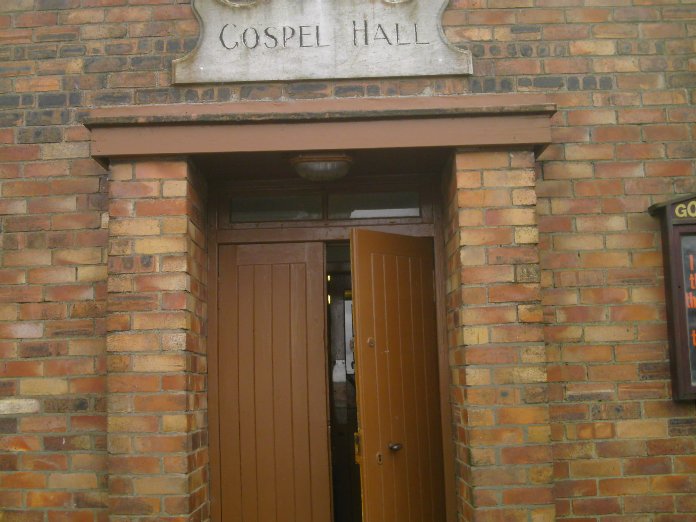
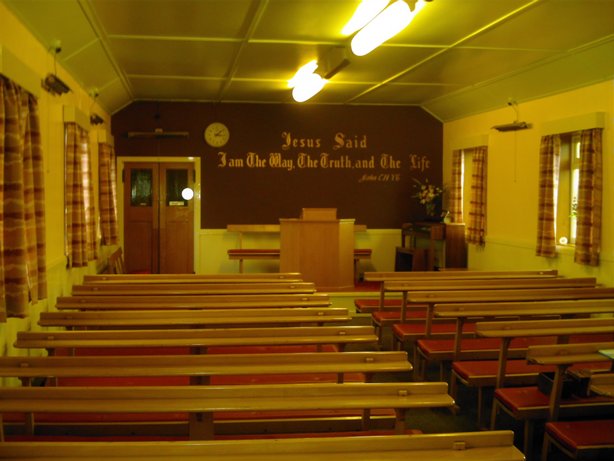
The builder was William White who was originally from Stonehouse but had taken up residence in a cottage in Main Street, Salsburgh following his marriage to Agnes Muir from Salsburgh. They were both members of the Gospel Hall congregation. The family eventually emigrated to Canada.
Up until the latter half of the last century groups of Gospel Hall members and friends were a common sight in the village as they regularly took to the streets, stopping at various points, to sing hymns and preach the Gospel message.
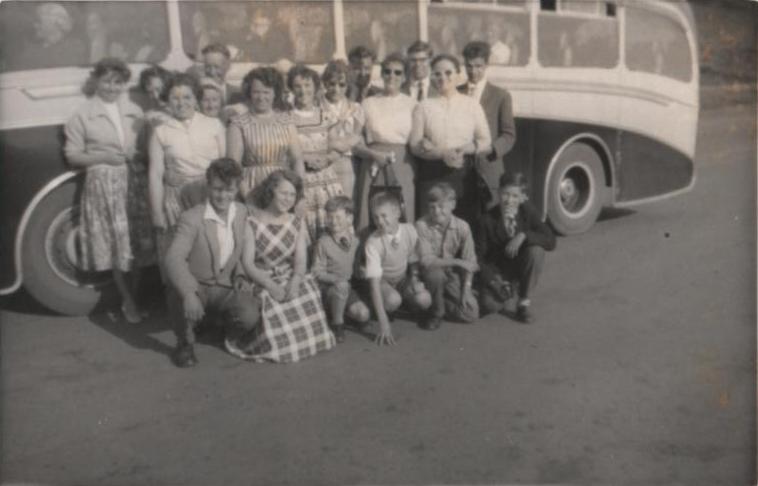
Gospel Hall Outing 1958
Although the open air meetings are no longer held the congregation and friends continue to meet in the Gospel Hall for worship.
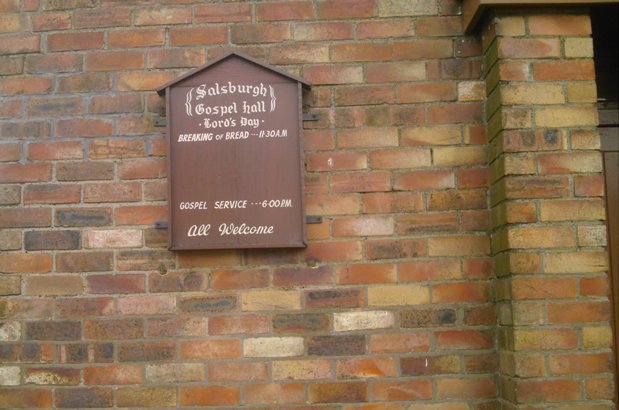

---------------00000---------------
SACRED HEART.
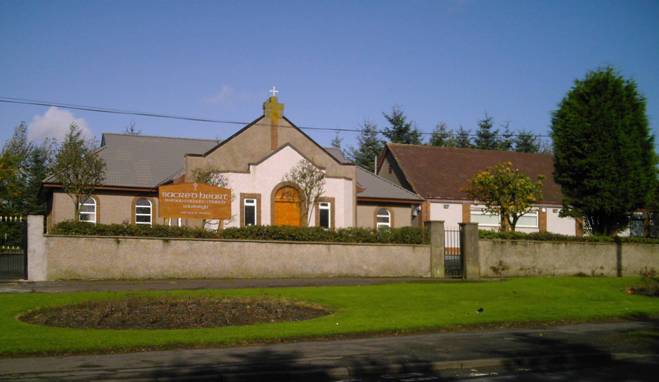
Prior to 1932 Roman Catholics in the village of Salsburgh and the surrounding area were part of Chapelhall Parish in the Diocese of Glasgow. Their spiritual needs were catered for by St. Aloysius Church in Chapelhall.
In 1932 it was decided by the Diocese of Glasgow to merge the Sacred Heart congregation in Salsburgh with the small Parish of St. Catherine’s in Harthill to form a larger Parish. The members of St. Catherine’s congregation had been part of St. Patrick’s in Shotts but had become a separate congregation in1924 and with the erection of St. Catherine’s Chapel in Harthill in 1925 had become a Parish in its own right.
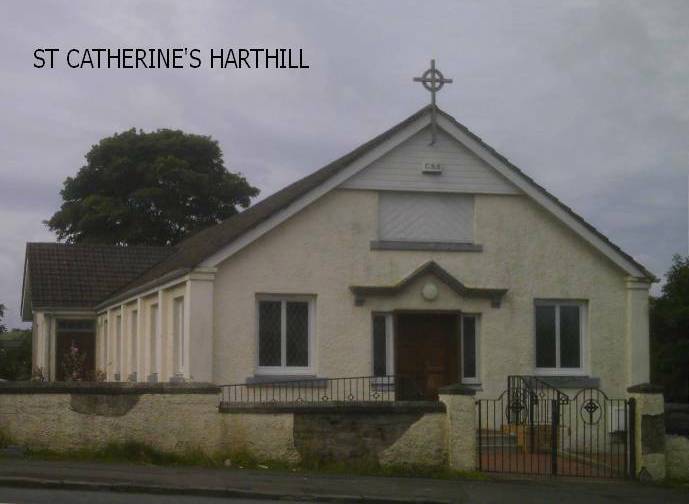
Father O’Rourke was the serving Priest at Harthill during the merger with the Salsburgh congregation.
Following this merger and having no Church of their own arrangements were made for the Salsburgh parishioners to attend Mass in Shottskirk School on certain Sundays in the month whilst on the other Sundays they travelled by bus to Mass in St. Catherine’s in Harthill. During this period before the opening of the first Sacred Heart Church confessions were heard in the McHugh’s home at Mossview Cottage, 51 Main Street, Salsburgh and also in homes in the Coltness Iron Company’s red brick Lea Rigg building at the east end of Main Street.
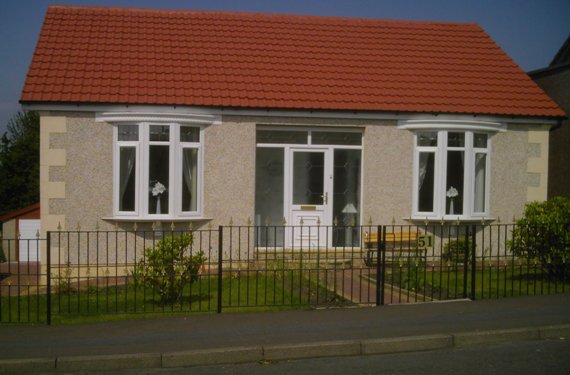
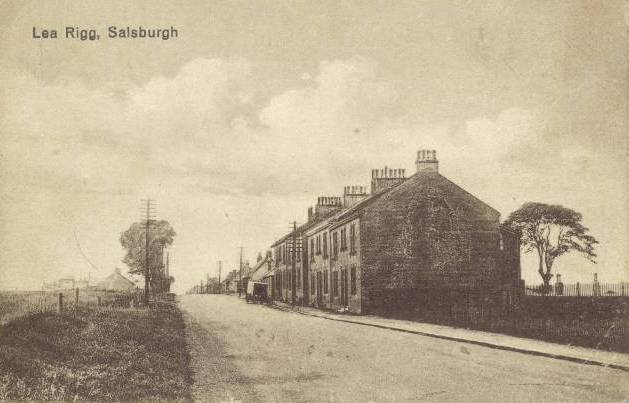
Before 1927 catholic children of school age attended Shottskirk School with Religious Education being provided for the children on a weekly basis in Patrick Fairlie’s home at Sighthill Farm. From 1927 the children were bussed to St. Aloysius School in Chapelhall.
The first Sacred Heart Church was a wooden building erected in 1933 where Mass was said every Sunday. With the destruction of this building by fire in July, 1936 Mass was again said in Shottskirk School and St. Catherine’s in Harthill under similar arrangements as before till the completion of the new Sacred Heart Church in 1938.
The architect for the Sacred Heart Church in Salsburgh was Alexander McAnally who had also been the architect in 1933/1934 for the Presbytery building attached to St. Aloysius Church in Chapelhall.
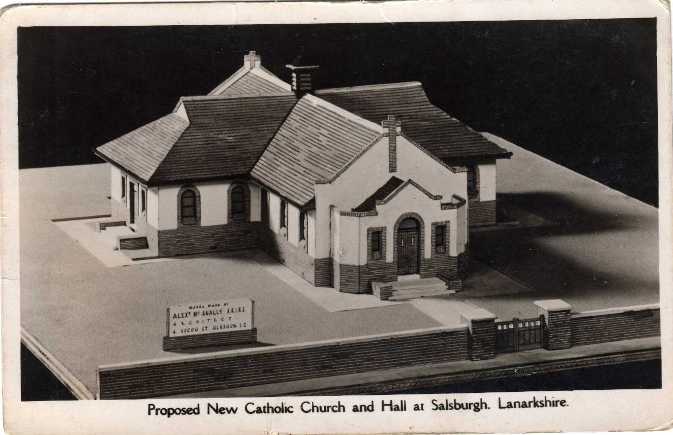
The new Church was built on ground at the east end of Main Street which had been obtained from the Airdrie and Coatbridge Water Company. This company eventually became part of Scottish Water.
The official opening of the Sacred Heart Church was conducted by Father Thomas Egan in October, 1938.
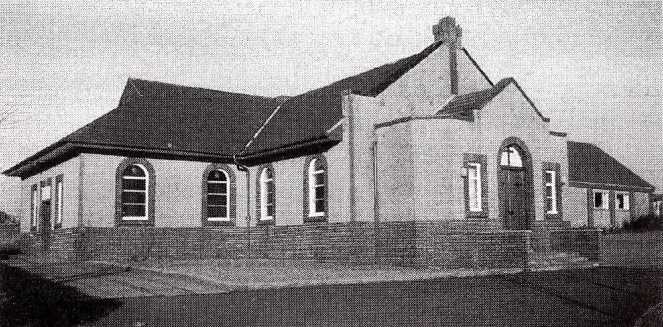
Although services were conducted every Sunday in the Church the Sacraments continued to take place in St. Catherine’s, Harthill. This continued to be the case for some considerable time.
Responsibility for Sacred Heart and St. Catherine’s Churches was transferred by the Diocese of Glasgow to the Diocese of Motherwell after the setting up of the Motherwell Diocese in 1947.
In 1962 a new Parochial Hall was constructed at the east side of the Church.
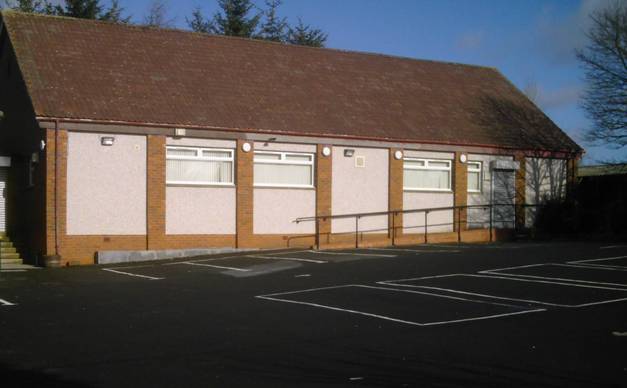
This hall replaced the previous metal roofed hall built in the late 1940’s which had been located on a raised portion of ground at the rear of the Church. This old hall was subsequently demolished.
In 1982, under the direction of Father Bartholomew O’ Regan, the Sacred Heart was renovated and rededicated with renovations also being carried out in the Parochial Hall. A significant amount of this work was carried out by volunteers from the congregation.
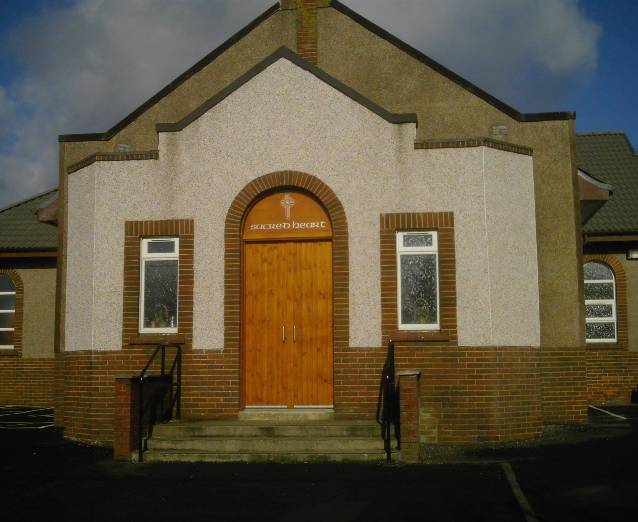
Pope John Paul II came to Scotland as part of his British visit in May/June 1982 and this occasion was celebrated by the installation of two commemorative windows located just inside the west entrance to the Church.
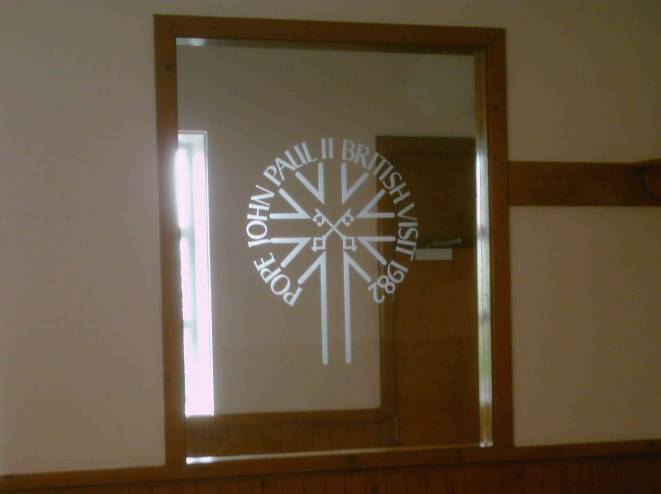
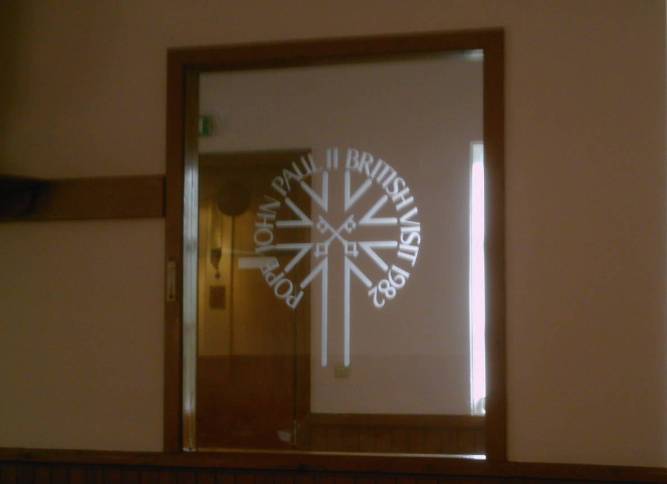
The Golden Jubilee of the Sacred Heart took place in 1988. A brochure celebrating this event was produced by a Golden Jubilee Committee comprised of local parishioners.
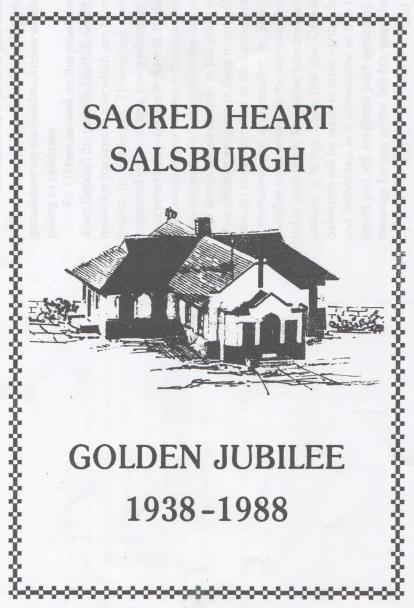
In 2004 a comprehensive renovation programme was carried out in the Church and the Parochial Hall.
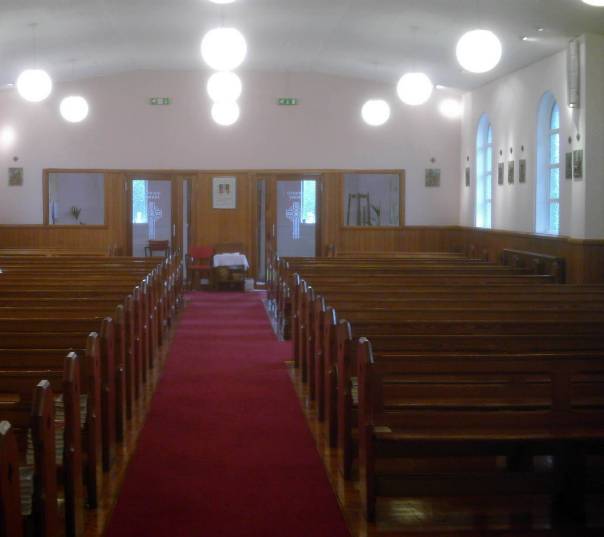
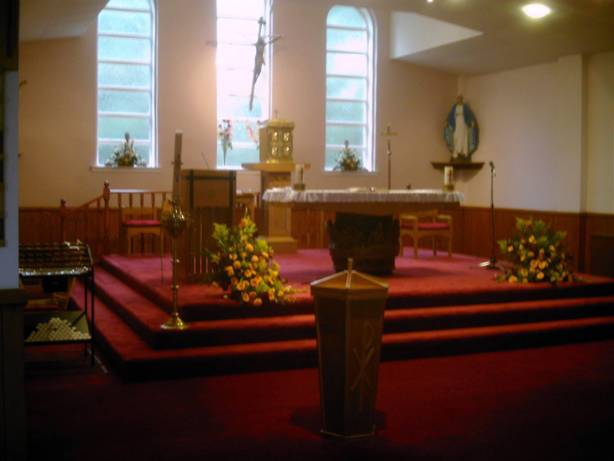
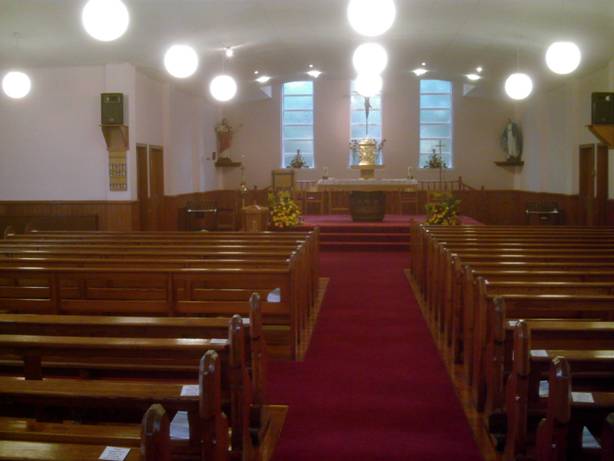
---------------00000---------------
KIRK O’ SHOTTS HALL CHURCH.
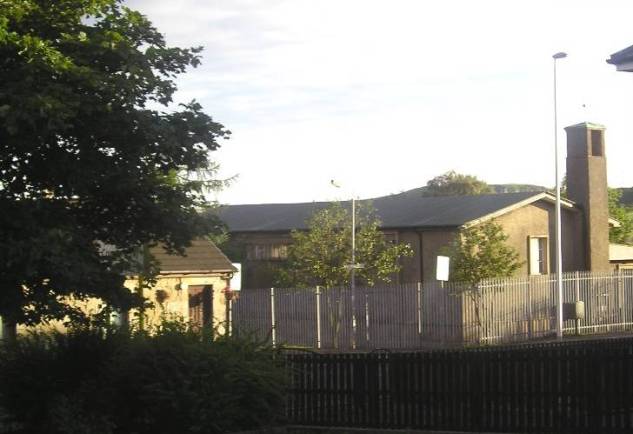
The Hall Church was built in the centre of the village on ground at Quarrelhead which had been known in the past as Waddle’s Land. This area of ground had for many years been owned by Shottsburn Church. In 1949 the Kirk O’ Shotts Session made an enquiry as to the possibility of purchasing this piece of ground. Following a meeting by Shottsburn officials it was agreed, that because it was unlikely that Shottsburn Church would make use of this land for building, this site should be gifted to the Kirk O’ Shotts. This transfer of ownership took place in 1950.
Construction of the Hall Church began in 1953 with the foundation stone being laid on the 24th October of that year. The laying of the foundation stone was carried out by the Earl of Selkirk assisted by the Rev. McConnochie of West Parish Church, Airdrie and the minister of Kirk O’ Shotts the Rev. John William McBride.







